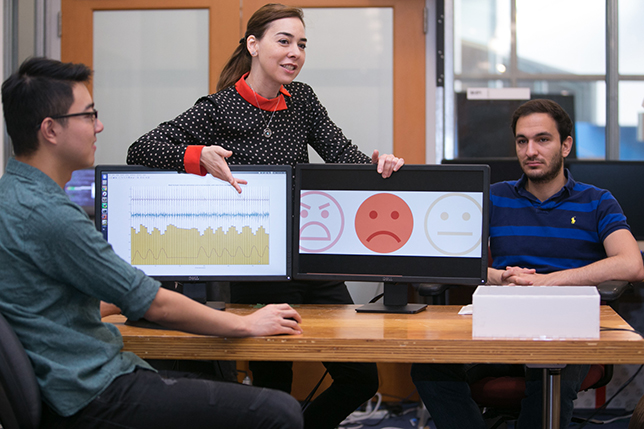Researchers at MIT’s Computer Science and Artificial Intelligence Lab (CSAIL) have found a way to detect human emotions purely through radio signals. Using a device called the EQ-Radio, which emits and captures reflected radio frequency (RF) waves, the researchers bounced waves off subjects to measure their breathing patterns and heart rates.
As Computer Science and Artificial Intelligence Laboratory (CSAIL) researchers Mingmin Zhao, Fadel Adib and Dina Katabi describe in their paper, “Emotion Recognition Using Wireless Signals,” their technique, dubbed “EQ-Radio” transmits a radio frequency (RF) signal and then analyzes its reflections off of a person’s body to recognize whether he or she is happy, sad, angry or content. Algorithms slice the reflections into individual heartbeats and then analyze small variations in individual beat length. At the same time, the technology mitigates the impact of breathing in order to emphasize the signals from the heartbeats.

According to the researchers, their approach for recognizing emotion is more accurate than the use of facial recognition because the latter “tends to miss subtle emotions and can be easily controlled or suppressed.” (Think about a poker face.) Likewise, physiological measurements such as ECG and EEG signals may be more reliable because they’re “controlled by involuntary activations of the autonomic nervous system”; however, “the signals require physical contact with a person’s body,” and therefore “interfere” with the user’s experience, which can in itself affect the emotion state.
In contrast, the researchers noted, “EQ-Radio can capture physiological signals without requiring the user to wear any sensors, by relying purely on wireless signals reflected off her/his body.”
The technique has three components: a radio for capturing the RF reflections; the heartbeat “extraction” algorithm; and a classification system that maps learned physiological signals to emotional states. The latter can be thought of like an X-Y diagram with “valence” on one axis to denote positive or negative feelings and “arousal” on the other to denote calm vs. “charged up.” For example, anger and sadness are negative feelings, but anger involves more arousal. In the same way, joy and pleasure are both positive feelings, but joy is normally tied to excitement while pleasure is typically tied to a state of contentment.
While the exact correlations may vary from person to person, the researchers explained, they’re still consistent enough that EQ-Radio can detect the appropriate emotion with 70 percent accuracy, even without a baseline in place.
“Just by generally knowing what human heartbeats look like in different emotional states, we can look at a random person’s heartbeat and reliably detect their emotions,” said Zhao, a PhD student, in an article about the project.
